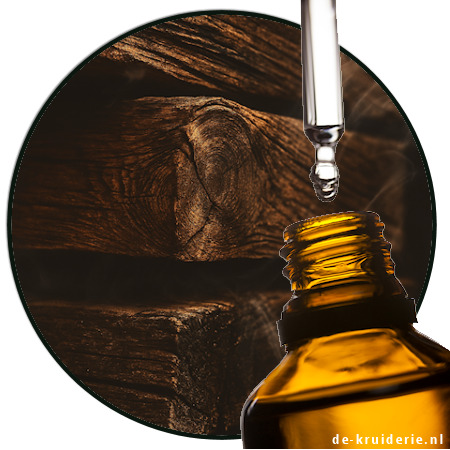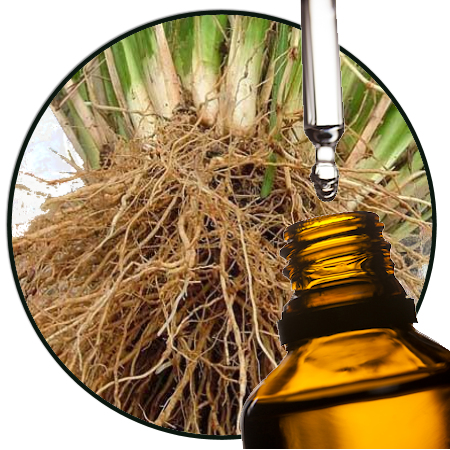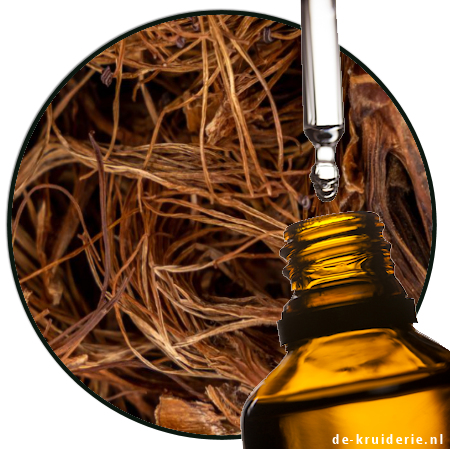

Ghandi Root (EO)
Botanical name: Homalomena aromatica
Common synonyms: Gandhi Root, Sugandh Mantri, Gandhi Root Oil
Origin : India
Method: steam distillation of the dried rhizomes/rootstocks
Scent: a deep, earthy and woody base note with resinous and slightly sweet nuances, excellent as a fixative and to give warmth and depth to natural and niche perfumes
Appearance: dark brown to amber liquid (color may vary by batch)
Function: base to heart note; enhances woody, ambery and orris-like accords.
1st Class Quality Products
All fragrances are selected with care
Delivery from stock
We supply everything from our own stock, unless otherwise stated on the product itself.
Ghandi Root (Homalomena aromatica) brings a deep, earthy and woody base note with resinous and slightly sweet nuances, excellent as a fixative and to give warmth and depth to natural and niche perfumes.
Fragrance profile and sensory application
- Character: warm, earthy, woody and slightly resinous; sometimes with sweet or woody nuances; deep, grounding base note that adds warmth and depth to compositions.
- Use in perfumery: base or heart note in natural and niche perfumes; combines well with wood notes, resins, patchouli, orris derivatives, and amber materials to give depth and fixation.
- Use in care and aromatherapy: usable in massage oils, bath products and relaxation blends; traditionally used for calming and grounding applications.
Suggestions for combinations and accords
- Woody-amber: Ghandi Root + sandalwood + labdanum + ambroxan.
- Earthy chypre: Ghandi Root + vetiver + bergamot + oakmoss.
- Natural base blends: Ghandi Root + patchouli + orris ketone + musks.
Use in aromatherapy
Ghandi Root is traditionally used as a grounding, calming oil that can support emotional calm and relaxation.
Forms of application and dosages
- Diffusion: 3-6 drops in a standard electric diffuser (according to device instructions); combine with lavender, bergamot or frankincense for relaxation.
- Topically (dilute): 0.5-2% in a carrier oil (e.g. 3-12 drops per 10 ml of carrier oil) for massage or body oil; always perform patch test.
- Bath: 3-6 drops dissolved in 10-20 ml of emulsifier (e.g. milk or bath oil) before adding to bath water.
- Inhalation: 1-2 drops on a handkerchief or in a personal inhaler for short-term use.
Application Tips
- Combine Ghandi Root with vetiver and patchouli for a deep earthy base.
- Add Iso E Super or Cashmeran for diffusion and modernity.
- Use Sandalwood or Amyris to soften and fix the blend.
- In aromatherapy: combine with lavender or frankincense for relaxation
Other fragrances that share fragrance characteristics with Ghandi Root
Similar fragrances to Ghandi Root are earthy, woody and resinous materials such as vetiver, patchouli, sandalwood, and certain amber or musky aroma chemicals.
Similar aroma chemicals
These synthetic fragrances approximate the fragrance profile or enhance aspects of Ghandi Root:
- Cashmeran: musky-woody, warm and resinous; gives depth and diffusion.
- Iso E Super: dry woody, subtle amber; enhances the modern woody side.
- Ambroxan: ambery, warm and persistent; fixative with woody undertones.
- Patchoulol: pure component from patchouli; earthy, woody and powerful.
- Cedrol: cedric, dry and balsamic; enhances wood texture.
- Vetiveryl acetate: elegantly vetiver-like, less smoky; well used in modern perfumes.
Comparable essential oils
These oils share fragrance characteristics with Ghandi Root (Homalomena aromatica):
- Vetiver (Vetiveria zizanioides): deeply earthy, smoky and woody; excellent base note.
- Patchouli (Pogostemon cablin): earthy, spicy and slightly sweet woody note; enhances the resinous side of Ghandi Root.
- Sandalwood (Santalum album): soft, creamy woody; adds warmth and fixation.
- Cedarwood (Cedrus atlantica or Juniperus virginiana): dry woody, balsamic; strengthens wood structure.
- Nardus / Spikenard (Nardostachys jatamansi): earthy, spicy and calming; traditionally used in meditative blends.
- Amyris (Amyris balsamifera): balsamic, slightly musky and woody; budget-friendly alternative to sandalwood.
Physico-Chemical Properties
| Parameter | Value range | Method / Note |
|---|---|---|
| Appearance | Dark brown to amber oil | Visual inspection |
| Smell | Earthy, woody, resinous | Sensory assessment |
| Refractive Index (20 °C) | 1.4780 - 1.4820 | Refractometer |
| Specific Gravity (25 °C) | 0.8840 - 0.9050 | Hydrometer |
| Solubility | Freely soluble in alcohol and vegetable oils | Practice test |
GC-MS Analysis (Gas Chromatography).
| Component | Percentage (%) | Classification |
|---|---|---|
| α-pinen | 0,22 | Monoterpen |
| α-terpinen | 1,55 | Monoterpen |
| α-thuyen | 0,27 | Monoterpen |
| α-phellandren | 0,27 | Monoterpen |
| β-myrcen | 0,28 | Monoterpen |
| β-phellandren | 0,28 | Monoterpen |
| β-caren | 0,33 | Monoterpen |
| sabinen | 0,62 | Monoterpen |
| β-pinene | 1,07 | Monoterpen |
| α-pinene | 1,55 | Monoterpen |
| τ-cymen | 1,07 | Monoterpen |
| terpinols | 1,06 | Monoterpen |
| α-copaen | 1,07 | Sesquiterpen |
| α-selinene | 0,33 | Sesquiterpen |
| β-caryophyllene | 0,33 | Sesquiterpen |
| α-cubenene | 0,33 | Sesquiterpen |
| γ-cadinene | 0,71 | Sesquiterpen |
| δ-cadinene | 0,42 | Sesquiterpen |
| germacren D | 1,23 | Sesquiterpen |
| α-terpineol | 0,42 | Monoterpen |
| geraniol | 0,33 | Monoterpen |
| linalool | 1,06 | Monoterpen |
| nerole | 3,34 | Monoterpen |
| terpinene-4-ol | 16,43 | Monoterpen |
| β-terpineol | 0,33 | Monoterpen |
| citronellol | 0,33 | Monoterpen |
| citronellal | 0,33 | Monoterpen |
| neryl acetate | 0,33 | Ester |
| 1,8-cineol | 1,84 | Monoterpen |
| linalol cis-oxide | 0,33 | Oxid |
| thymol | 0,33 | Phenol |











